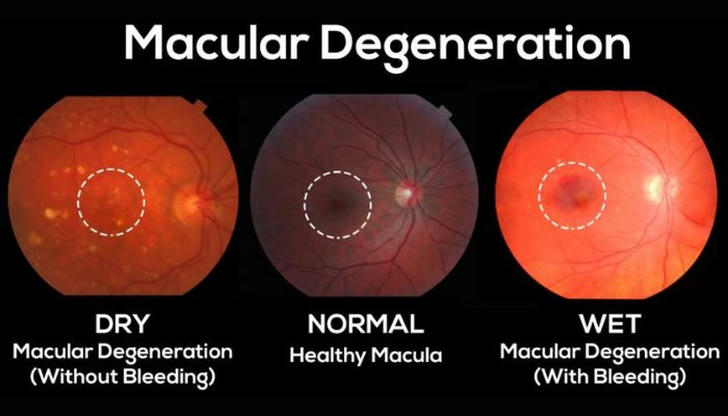Age-Related macular degeneration understanding risks causes and practical solutions for americans
In the United States, as the population ages, age-related macular degeneration (AMD) has emerged as a significant threat to the vision of seniors. AMD, a disease that affects the macula, the central part of the retina responsible for sharp, central vision, can lead to vision loss, blurred vision, and even blindness. This article delves into the causes and risk factors of AMD, presents a compelling real-life case study, and offers concrete, actionable solutions to help Americans better prevent and manage this condition.

Causes and Risk Factors of AMD
1. Advancing Age
AMD is closely associated with age. As individuals grow older, metabolic substances between the retina and choroid tend to deposit in the macula, causing toxicity and triggering AMD. In the U.S., AMD affects approximately 15% of individuals over 50, with the incidence rising with age.
2. Smoking
Smoking is currently the most definitive, direct, and evidence-based cause of AMD. Studies show that smokers are 6.6 times more likely to develop AMD than non-smokers. Harmful substances produced during tobacco combustion, such as nicotine and carbon monoxide, directly damage retinal pigment epithelial cells, increasing the risk of AMD.
3. Family History of AMD
AMD exhibits a clear familial clustering. Having a family history of AMD significantly increases an individual's risk of developing the disease, suggesting a strong genetic component.
4. Gender (Female)
Women are more susceptible to AMD than men. This may be related to hormonal changes, particularly after menopause.
5. Dietary Fat and Elevated Cholesterol
A high-fat diet, especially one rich in saturated and trans fats, such as fried foods and pastries, can lead to elevated cholesterol levels. High cholesterol exacerbates AMD by triggering inflammatory responses and oxidative stress in the retina, damaging retinal cells.
6. Hypertension and Cardiovascular Disease
Hypertension and cardiovascular disease are also important risk factors for AMD. Hypertension can damage retinal blood vessels, causing macular edema or hemorrhage. Long-term hypertension exacerbates atherosclerosis in the retinal vessels, further worsening macular degeneration. Cardiovascular disease patients may also experience circulatory insufficiency, leading to macular degeneration in the eye area.
7. Obesity
Obesity accelerates the progression of AMD, causing early-stage AMD to directly develop into intermediate or even late-stage disease. Obesity can also cause other complications, such as diabetes, further increasing the risk of AMD.
Practical Solutions and Implementation Details
1. Healthy Diet
Adopting a healthy diet is crucial for preventing and managing AMD. Reducing the intake of saturated and trans fats found in fried foods, fast food, and baked goods is essential. Instead, focus on consuming foods rich in antioxidants, such as leafy greens (spinach, kale), fruits (blueberries, strawberries), nuts (almonds, walnuts), and fish (salmon, mackerel) rich in omega-3 fatty acids. These foods help protect the retina from damage caused by oxidative stress and inflammation.
2. Regular Eye Exams
Regular comprehensive eye exams are crucial for early detection and timely management of AMD. Americans aged 40 and older should undergo dilated eye exams at least once every two years, or more frequently if recommended by their ophthalmologist. These exams allow for early detection of AMD and other ocular diseases, enabling timely interventions to slow or halt progression.
3. Lifestyle Modifications
Quitting smoking is the most effective lifestyle change to reduce AMD risk. Smokers should seek professional help to aid in cessation. Additionally, maintaining a healthy weight through regular physical activity and a balanced diet can help control blood pressure, cholesterol levels, and reduce the risk of AMD.
4. Medical and Surgical Treatments
For those diagnosed with AMD, medical treatments such as anti-VEGF injections (e.g., Lucentis, Eylea) can help reduce the growth of abnormal blood vessels in the eye, thereby controlling AMD progression. In some cases, laser therapy or photodynamic therapy may be recommended to treat neovascular AMD, the more severe form of the disease.
5. Complementary Therapies
While not a substitute for medical treatment, certain complementary therapies may provide additional benefits. Supplements such as lutein, zeaxanthin, omega-3 fatty acids, and vitamins C and E have been shown to support eye health and may slow AMD progression. However, it's crucial to consult with an ophthalmologist before starting any supplement regimen, as some supplements may interact with medications or have unwanted side effects.
6. Support Groups and Counseling
Coping with AMD can be emotionally challenging. Joining support groups can provide a sense of community, emotional support, and practical advice from others facing similar challenges. Counseling services can also help individuals and their families manage the emotional impact of AMD and make informed decisions about treatment options.

Implementation Details
● Scheduling Regular Appointments: Set reminders for regular eye exams and keep a calendar of upcoming appointments.
● Quitting Smoking: Utilize resources such as smoking cessation programs, nicotine replacement therapy, or counseling to help quit.
● Medication Adherence: Follow prescribed treatment plans and take medications as directed. Keep a medication schedule and use pill reminders if necessary.
● Monitoring Health Metrics: Regularly check blood pressure, cholesterol levels, and maintain a healthy weight through regular physical activity and diet.
● Lifestyle Adjustments: Incorporate regular physical activity, such as walking, swimming, or yoga, into your daily routine. Prepare meals that are low in saturated fats and high in antioxidants.
● Staying Informed: Keep abreast of the latest research and advancements in AMD treatment through reputable sources such as medical journals, ophthalmology associations, and patient advocacy groups.
conclusion
age-related macular degeneration is a significant health concern for Americans, particularly as the population ages. By understanding the risk factors, adopting healthy lifestyles, and adhering to medical treatments, individuals can significantly reduce their risk of developing AMD or manage the condition effectively. Maria's story serves as a testament to the power of early detection, proactive management, and lifestyle changes in preserving vision and quality of life.
